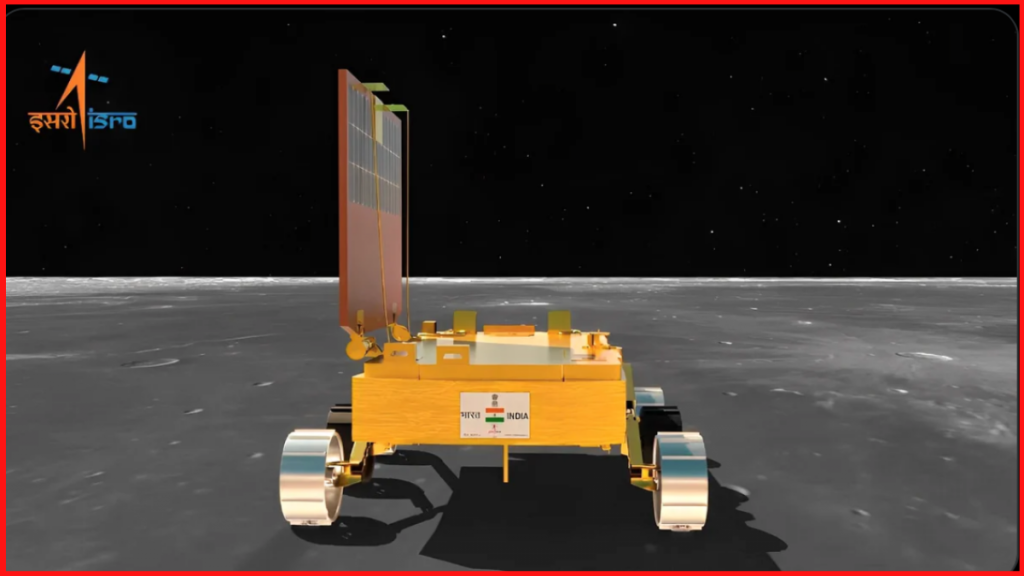New Delhi: The Indian Space Research Organisation (ISRO) is set to embark on a pivotal mission to re-establish communication with the Vikram lander and Pragyan rover of Chandrayaan-3 on Friday, September 22. This crucial endeavor follows the transition of these lunar explorers into sleep mode due to the onset of a lunar night, which commenced after a successful hop experiment.
ISRO’s decision to transition the Vikram lander and Pragyan rover into sleep mode during the lunar night was a strategic move aimed at conserving power. This mode effectively hibernates non-essential systems, preserving vital energy resources for future operations. However, it’s worth noting that the lander’s receivers remained active, enabling the continued collection of critical data throughout this period.
Here is how the Lander Imager Camera captured the moon’s image just prior to touchdown. pic.twitter.com/PseUAxAB6G
— ISRO (@isro) August 24, 2023
Awaiting Lunar Dawn: Challenges and Optimism
The lunar night presented significant challenges, with temperatures plummeting to an astonishing minus 180 degrees Celsius, rendering technology inert in the absence of sunlight. Vikram and Pragyan, reliant on solar energy harnessed by attached panels, faced the brunt of these formidable conditions. The lander and rover’s primary operational phase coincided with the lunar day, ensuring a steady supply of sunlight essential for their functioning.
ISRO, however, remains optimistic about the reactivation of Vikram and Pragyan as the lunar night comes to an end. M Srikanth, Chandrayaan-3 mission operations director, expressed confidence in their performance and system health. He stated, “The performance of Vikram and Pragyan so far and the overall health of all systems have increased hopes of the two coming back to life after the night passes.”
Chandrayaan-3 Mission:
Here are the first observations from the ChaSTE payload onboard Vikram Lander.ChaSTE (Chandra’s Surface Thermophysical Experiment) measures the temperature profile of the lunar topsoil around the pole, to understand the thermal behaviour of the moon’s… pic.twitter.com/VZ1cjWHTnd
— ISRO (@isro) August 27, 2023
Survival Strategies in Lunar Night
Surviving the lunar night hinges on two critical factors. While the batteries possess sufficient capacity to handle short eclipses, they lack the potency to maintain warmth throughout the prolonged lunar night, resulting in dormancy. Srikanth clarified, “Our batteries have sufficient capacity to tackle small eclipses, but they are not powerful enough to keep the systems warm throughout a lunar night.”
As the lunar dawn approaches, the Vikram lander, equipped with large solar panels, faces a relatively straightforward task. However, the rover, with its deployable solar panel, demands precise positioning to optimize sunlight exposure—a critical factor for successful reactivation.
Chandrayaan-3’s Lunar Milestones
The Chandrayaan-3 mission has already achieved significant milestones, positioning India among the elite nations with successful lunar landings. The hop experiment executed by the Vikram lander on September 4 showcased ISRO’s technical prowess and holds promise for future sample return and human missions on the Moon. Notably, India became the first country to execute a hop on the lunar surface, marking a historic achievement.
Moreover, Chandrayaan-3’s choice of landing site—the uncharted south pole of the Moon—holds immense significance. This region, known for its extreme temperature fluctuations, conceals a substantial reservoir of water ice, a critical resource for future lunar exploration.
The mission entrusted Vikram and Pragyan with several tasks, including probing for water ice in lunar craters and recording temperature variations. Importantly, it confirmed the presence of Sulphur and other minor elements, thanks to advanced instruments like LIBS and APXS. These accomplishments not only mark a significant milestone for India but also pave the way for future lunar exploration endeavors.
Chandrayaan-3 Mission:
In-situ scientific experiments continue …..
Laser-Induced Breakdown Spectroscope (LIBS) instrument onboard the Rover unambiguously confirms the presence of Sulphur (S) in the lunar surface near the south pole, through first-ever in-situ measurements.… pic.twitter.com/vDQmByWcSL
— ISRO (@isro) August 29, 2023
In summary, the Chandrayaan-3 mission continues to inspire hope and excitement as it progresses in its mission to unlock the mysteries of the Moon’s south pole, ultimately contributing to the advancement of lunar science and exploration.

